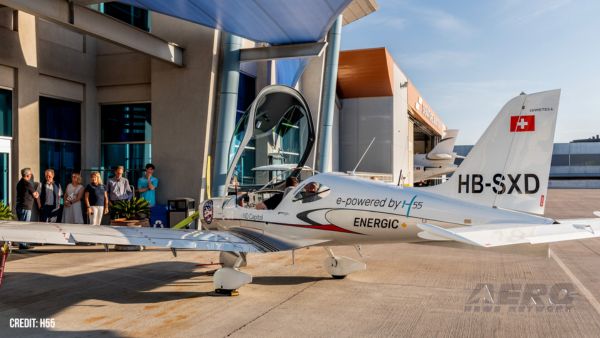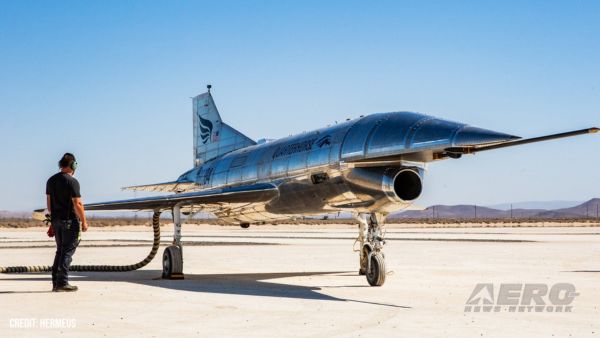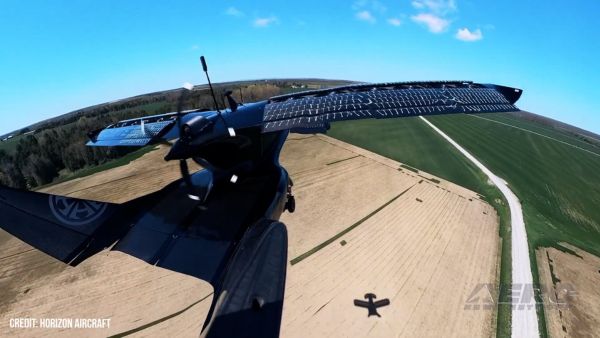Both Pilots Able To Bail Out Safely
The Aircraft Factory, the South African company which
is developing the Sling LSA, says that at midday on Saturday,
February 13th, ZU-TAF, the aircraft in which the company owners,
Mike Blyth and James Pitman, circumnavigated the globe during 2009,
went down in the ocean while conducting spin testing just off the
South African Kwa-Zulu Natal coast. While the staff and owners of
The Airplane Factory are devastated to have lost their production
prototype aircraft, they believe that comprehensive spin testing of
aircraft is an important aspect of an aircraft development program,
notwithstanding that it is inherently risky.
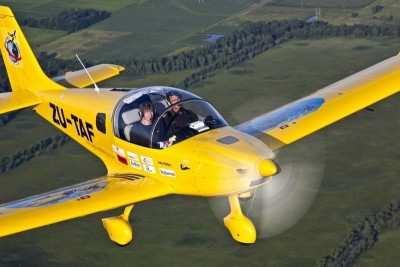
ZU-TAF File Photo
ZU-TAF was The Airplane Factory's second prototype aircraft and
has precisely the same aerodynamic characteristics as the
production aircraft which the company sells. The only structural
differences between ZU-TAF and the production Sling were the
sealing off of certain sections of the wing to increase the number
of fuel tanks, the marginal beefing up of the composite main gear,
making the joysticks removable in flight, and the removal of a
cross brace behind the seats to allow the pilots to lie flat on
long flights. In all other respects the round the world aircraft
was the same as the production LSA Sling.
During July 2009 ZU-TAF was flown 9,000 nm from Johannesburg,
South Africa, to Oshkosh, Wisconsin, westwards over a 10 day
period. The longest leg included a 2,200 nm leg over the Atlantic
Ocean. During August the aircraft was flown 15,100 nm back to
Johannesburg, also westwards, over 23 days. The route included Los
Angeles, Hawaii, the Marshall Islands, Micronesia, Indonesia,
Malaysia, Sri Lanka and the Seychelles. The aircraft performed
flawlessly during the entire circumnavigation. In fact the only
maintenance related issues encountered were a faulty fuel tank
drain valve and a crack in one of the supports for the electric
propeller pitch motor.
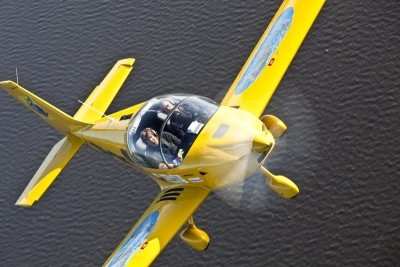
ZU-TAF File Photo
In view of the aircraft's excellent performance well beyond
1,320 lbs a decision was also taken to certify the Sling not only
in accordance with the ASTM LSA standard, but also to 1,543 lbs.
This required further flight testing which could be performed at
the same time as spin testing, which had not yet been completed.
The company therefore arranged for a qualified test pilot, Carlos
Garcia-Cabral, and his colleague, Shaun Fraser, to perform spin
testing from Virginia Airport, Durban, on the weekend of February
13th. A progressive spin program was agreed incorporating
discretion for the pilot to determine appropriate incremental steps
and safety requirements.
During the first spin test flight the aircraft proved to recover
immediately and predictably from incipient, one turn and one and a
half turn spins, using conventional control inputs. The test pilot
accordingly requested that the CG of the aircraft be moved
backwards to its midpoint, the fuel quantity be increased and a
second test pilot fly the next test with him so as to monitor and
record the recovery with a film camera. The aircraft was lost
during this follow up flight.
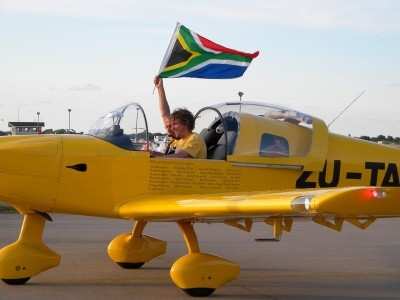
ZU-TAF Arrives Oshkosh 2009
The pilots reported after the accident that in the new
configuration the aircraft also initially recovered immediately and
predictably from incipient, one and one and a half turn spins,
including spins in which incorrect control and throttle inputs were
intentionally used. The recovery characteristics of the aircraft
from these spins led the pilots to believe that they could safely
test it to two full turns, which they accordingly did. Following
successful recovery from initial two turn spins, in the final spin
of the flight the spin flattened, and notwithstanding their
efforts, the pilots were unable to recover the aircraft in the
height available. The agreed spin test protocol provided for the
implementation of emergency procedures at 4,000 feet agl. At that
altitude the engine was accordingly cut and the ballistic parachute
deployed. Although the ballistic rocket fired, it failed to pull
the packed chute through the parachute cover. It would appear that
the weight of the chute and its shape was such that the force
required was too great to breach the cover, which subsequent
inspection suggests was fastened too firmly. This design is being
addressed and testing will be performed.
Notwithstanding the failure of the ballistic chute, both pilots
were able to exit the aircraft cockpit and deploy their emergency
parachutes. Unfortunately the force with which Carlos
Garcia-Cabral's canopy deployed caused him to suffer whiplash which
fractured his C2 ad C3 vertebrae. He received excellent medical
help and fortunately appears to have suffered little or no nerve
damage. He is expected to make a full recovery.
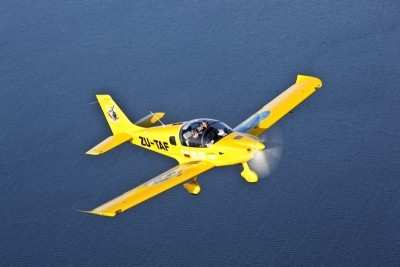
ZU-TAF File Photo
Following the pilots' exit from the aircraft it recovered from
the spin and impacted the water, approximately 200 miles offshore,
in a gliding turn to the right. Although the aircraft remained
intact and floated for approximately 2 hours, the search and rescue
services did not attach a rope to it before it sank below the
surface. The ocean current subsequently moved the aircraft and some
6 days later it has still not been found.
The Airplane Factory is currently awaiting the full written
reports of the pilots. The company will also continue to consider
all advice and input from experts as well as members of the
public. The Airplane Factory expects to have a new aircraft
flying by mid March 2010.
 ANN's Daily Aero-Term (05.29.25): Terminal Radar Service Area
ANN's Daily Aero-Term (05.29.25): Terminal Radar Service Area ANN's Daily Aero-Term (05.30.25): Very High Frequency (VHF)
ANN's Daily Aero-Term (05.30.25): Very High Frequency (VHF) Aero-News: Quote of the Day (05.30.25)
Aero-News: Quote of the Day (05.30.25) Airborne 05.23.25: Global 8000, Qatar B747 Accepted, Aviation Merit Badge
Airborne 05.23.25: Global 8000, Qatar B747 Accepted, Aviation Merit Badge ANN's Daily Aero-Linx (05.30.25)
ANN's Daily Aero-Linx (05.30.25)




